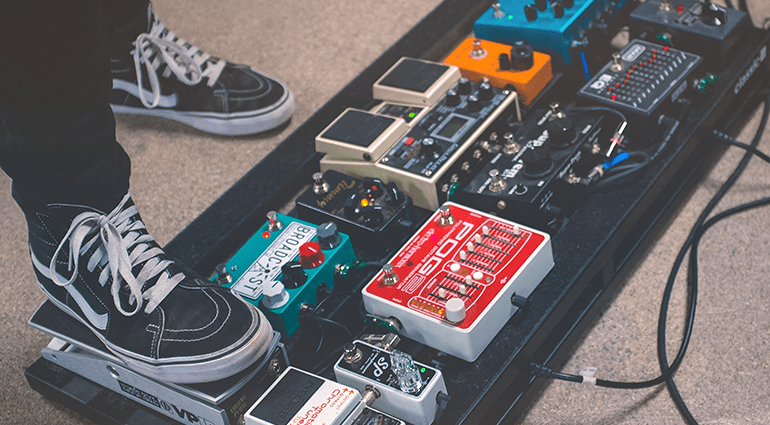
When starting with the electric guitar, it’s not uncommon to look at experienced player’s pedal board and think “Wow, so many pedals, with different names – wonder what should I get”. And while everyone knows that the core of your sound comes from the sensibility of your touch, your guitar and your amplifier, it is also true that certain pedals can transform and shape your tone to make it more unique and personal. Before shelling out all your beloved savings on unnecessary pedals, take a look at this guide to understand the 10 basic pedals, the so-called “must-haves”.
Tuner
As obvious as it sounds, a tuner (or tuning pedal) is fundamental for your rig. It can also act as a mute switch for changing guitars between songs. These days there are many smartphone apps for tuning your guitar – as well as clip-on tuners – but when you need precision and a clear visual indication of the pitch of your strings, nothing beats a good old tuning pedal. The Boss TU-3 is a classic tuning pedal with lots of useful settings – alternatively, you can check out the CPT-20 by Harley Benton which features true bypass connections and a super large LCD display. Need a smaller footprint? Try the Mooer Baby Tuner!
- Boss TU-3
- Mooer Baby Tuner
- Harley Benton CPT-20
Volume Pedal
Your guitar is equipped with a volume knob – but that doesn’t mean you won’t benefit from a volume pedal. Very useful for various applications, the volume pedal can act – as you imagine – as a pure volume for your guitar signal (placed right before the amp) and also as a master volume if placed after your amp. By using a stereo volume pedal you can further expand the tonal possibilities of your setup. Ernie Ball makes a variety of volume pedals with different specifications (in order to match your guitar, amplifier or musical needs). Mooer offers a very compact and stylish pedal, the Leveline – while Boss still sells to this day the FV-500-H, a pedal that passed the test of time and still performs amazingly well.
- Ernie Ball Volume VP JR
- Boss FV-500-H
- Mooer Leveline Volume Pedal
Wah-Wah
An effect made popular by guitarists like Hendrix, Jerry Cantrell, Slash and many more, the Wah-Wah effect is a pedal-controlled Q filter. The ultra-recognisable vocal-like effect is obtained by having a Q parameter going back and forth, thus “opening” your guitar voice or narrowing it down removing treble frequencies. Words cannot really describe it, and since its inception the Wah was featured on countless records. The Dunlop Crybaby is by far the most popular wah pedal, built with trusty analog circuitry. Despite Dunlop’s fame, many other manufacturers built beautiful pedals that have left their mark in music history due to their slightly different sound, such as the Vox VX V847A Wah, and the super modern optical Morley Wah.
- Dunlop Crybaby GCB95
- VOX VX V847A
- Morley MTG3 – 2020 Wah Lock
Overdrive
Back in the good ol’ days, guitarists had to crank their amplifiers to eleven in order to obtain a nice and creamy distortion. Today, this is no longer the case. Thanks to overdrive pedals, you can basically drive every clean amp into overdrive – at any volume – and choose the amount of gain and shape the tone precisely as desired. The overdriven or crunch sounds are commonly used for rock, to slightly get that “breakup” clean tone or to play blues licks and solos. During the last two decades, guitarists found out that overdrive pedals are also perfect for boosting the crunch channel of their amps into total distortion – a technique often used during guitar solos, to give the sound that extra weight and girth – or, as with the famous Tubescreamer, to tighten up the bass response of the amplifier gain channel. The Boss SD-1 is a very popular choice for overdrive pedals, capable of great sounds. The legendary TS9 by Ibanez is also worth a mention – even considering that it’s available in Mini and Deluxe formats. And while we’re at it, why not give the Harley Benton Ultimate Drive a try? This little screamer can boost your amp into full overdrive at a very competitive price.
- Boss SD-1
- Ibanez TS9
- Harley Benton Ultimate Drive
Distortion
Many people will say that Overdrive and Distortion pedals are basically the same thing: wrong! While the overdrive tends to add gain and texture to your clean tone, emulating a cranked amplifier, the distortion intentionally clips and distorts the waveform of the guitar signal. The effect of distortion pedal is much more audible and the resulting sound is harsher and louder, and sometimes completely different from the starting sound. Distortion pedals are perfect for rock and metal players, and represents a safe boat for guitarists that may feel the need to have a backup to their tube amplifier: a distortion pedal into the clean channel of a rented amplifier can save your gig! The ProCo Rat 2 is an instant classic, while the Electro Harmonix Metal Muff/Top Boost gives you some serious distortion with a top boost in single box. And for your über-metal needs, the Harley Benton Extreme Metal is here to help.
- ProCo Rat 2
- Electro Harmonix Metal Muff
- Harley Benton Extreme Metal
Compressor / EQ Pedals
If you’re a very dynamic player who likes to play soft and loud, a compressor is a must have: by raising the soft parts and lowering / adjusting the loud parts, you will get an even sound that works for most applications and won’t make ears bleed: the simplest way to describe it is as an “automated” volume control. The EQ, on the other hand, is crucial if you have a problematic guitar, an amplifier with limited tone-shaping control or, simply, need a creative way to alter the way your guitar sounds. EQ can be placed in front of the amp for shaping the sound going inside the amp or in the send/return (after the amplifier section) as a volume boost/eq boost.
The Boss CS-3 has been used for ages and, while being much younger in concept, the Electro Harmonix Tone Corset and the Harley Benton Dynamic Compressor are by no means inferior.
It’s impossible not to mention the legendary Boss GE-7a when talking about EQ pedals. The Artec SE-EQ8 and the MXR 6 band Equalizer feel equally at home and provide serious tone shaping options.
- Artec SE-EQ8
- Boss GE-7
- Boss CS-3
- Harley Benton Dyna Compressor
- MXR 6 band EQ
- Electro Harmonix Tone Corset
Chorus, Delay and Reverb
After shaping your sound, is important to add some depth to it, and here’s where the ‘ambiance’ pedals find their way into your rig. The chorus effect should be used properly, without overdoing it, but can give great results: the depth and the ‘3 guitarists playing your part’ effect can work amazingly well for your music. Delay and Reverb can be used lightly, in order to enhance your sound and fill up your guitar solos with a little space (by setting up a nice spring or hall reverb settings and a dotted delay) or heavily, to achieve creative sounds where the sky is the only limit.
The Electro Harmonix Small Clone is a very popular choice for getting a good chorus sound. In the Boss line, the CH-1 is certainly worth a try, while the Harley Benton Classic Chorus delivers good tones for an affordable price.
- Electro Harmonix Small Clone
- Boss CH-1
- Harley Benton Classic Chorus
- Boss DD-3
- Boss DD-8
Boss DD-3 and DD-8 are legendary digital delay pedals, heard on countless records. The MXR Carbon Copy Analog Delay, as the name implies, relies on analog circuitry: different flavours for different strokes. For a compact all-in-one pedal, the Mooer EchoVerb includes delay and reverb in a single offer.
Boss RV-6 is capable of great reverb sounds with a classic approach, while the TC Electronic Hall of Fame 2 is known for its wide range of reverb types and the added functionality of the MASH footswitch, which adds an expression pedal-like control to the pedal.
- MXR Carbon Copy Analog Delay
- Mooer EchoVerb
- Boss RV-6
- Electro Harmonix Holy Grail Plus
- tc electronic Hall of Fame 2
What was listed above was just the tip of the iceberg, and many many other pedals are waiting for you: why not check out our huge guitar pedal selection, by clicking here? You will find Multi-effects (a clever way to have all your effects in a single and practical format), looper pedals (in case you want to record a short phrase and start playing over it and layer some guitar parts), fuzz pedals (made famous by the good ol’ Jimi Hendrix and many others), Phaser, Flanger etc.
Essential Guitar Pedals: Your Feedback
Can you name a short list of pedals that you would take with you on a deserted island? Leave a comment below and let us know!
21 comments
Leave a Reply
You are currently viewing a placeholder content from Facebook. To access the actual content, click the button below. Please note that doing so will share data with third-party providers.
More InformationYou are currently viewing a placeholder content from Instagram. To access the actual content, click the button below. Please note that doing so will share data with third-party providers.
More InformationYou are currently viewing a placeholder content from X. To access the actual content, click the button below. Please note that doing so will share data with third-party providers.
More Information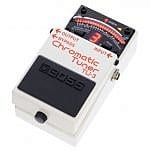
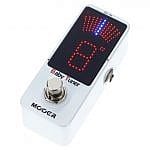
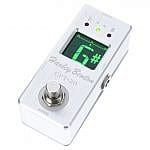
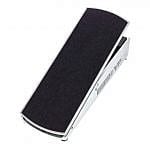
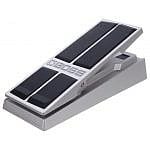
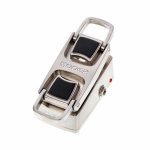

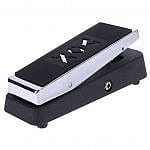
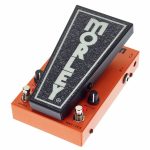
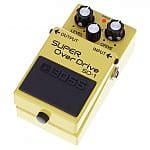
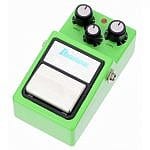
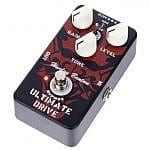
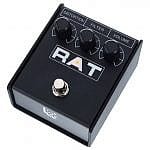
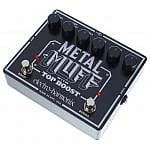
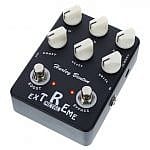
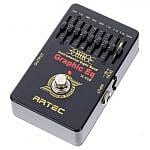
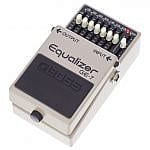
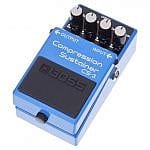
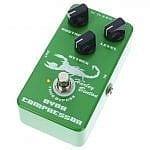
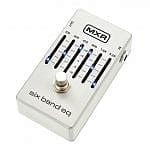
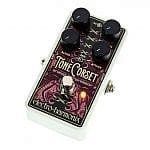
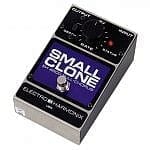
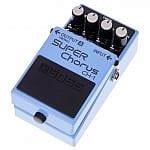
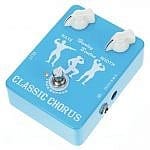
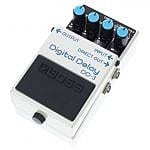
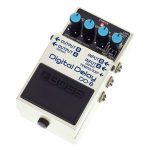
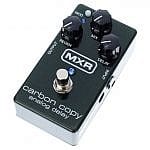


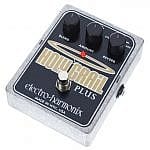
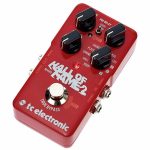
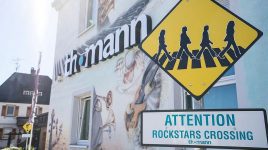
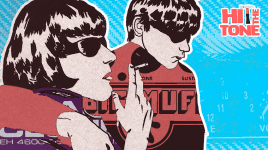
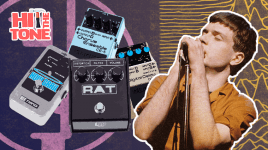

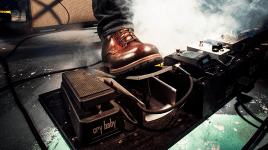
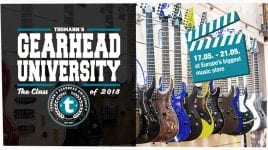
Stavrospgr says:
Nice article, pretty self-explanatory. I got tuner, overdrive, distrortion, chorus, wah and a fuzz pedal, that gives some nice strange dimensions to my playing…
Woody says:
Good artical, but seems to be for the lead guitarist.
How about some advice for rhythms guitarist !
Olof says:
TS808. Enuff said.
Woody says:
Good artical, but seems to be for the lead guitarist.
How about some advice for rhythm guitarists !
Marek says:
An add posted to advert Harley Benton. Still, a good marketing move.
Earlybird Smith says:
What about an article for bass players, enh?!
ATAKAN OKTEM says:
Great article thank you so much, I will choose easier now =)
Fred says:
What about flangers and phasers?
Doug says:
“after your amp”?
Isaiah Furrow says:
I’m looking to pick up our first few pedals… And I’m looking at one of the Harley Benton tuners that also act as a power supply for the rest, and a Harley Benton Spaceship board… Was kinda surprised to not see any mention of power supplies or a board in this article. Maybe do an article for people new so setting up a pedal board, with info on arranging pedals and also signal path…
Eventually I want to add a Wah, and the Hall of Fame reverb pedal, as well as a looping station. For now I’m looking to start with the board, tuner, Harley Benton Vintage OD, Harley Benton Crunch Distortion, XVive V7 Tube Drive, NUX Mini Core SE Chorus, and HB Digital Delay.
That should make a good budget starter setup for now, maybe change something later and with the addition of Wah, Reverb, Looping station, and possibly a phaser/flanger I think I will have a pretty well rounded setup. The multiple drive/distortions would be used for experimentation, but I’d probably keep 2 onboard .
Hi says:
Great article!
Now i know what to start with.
Jasper says:
Desert island thing… I need a boss DS-2 with me to cover multi distortion stuff. I would take a lovely STRYMON delay, a crybaby, boss phase shift and a skysurfer reverb for multiple reverb fx.
This article:????????????
Erick says:
I want to know how much effect guitar solo cost
Borris says:
Great article. Couldn’t be written much better!
Keep it up!
Joe says:
Thanks a lot Borris! Hope it helped. Best, //Joe
Gissing.Cash says:
If we do or don’t do it, someone will laugh
Elizabeth.Sunny says:
If we do or don’t do it, someone will laugh
Gissing.Cash says:
If we do or don’t do it, someone will laugh
olli says:
Good article mate
Ivette Lukas says:
No more stress!
National Guitar Academy says:
There are certain types of pedals that are known to provide a particular sound. Individuals inexperienced to the guitar pedal will find this tutorial useful. To help you improve your guitar playing, there are various online tools. Check out this site: https://nationalguitaracademy.com/how-to-play-bass-guitar/